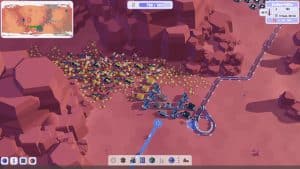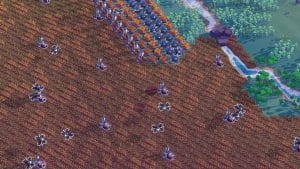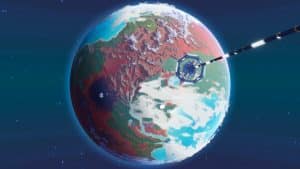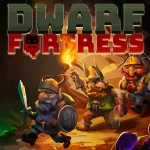Plan B: Terraform
Related Games
Description
🔥 What is Plan B: Terraform for PC
Plan B: Terraform is a planetary-scale city builder and terraforming simulation developed and published by Gaddy Games. Available on PC, the game offers players the challenge of transforming a barren, lifeless world into a habitable ecosystem capable of sustaining growing human settlements. It takes inspiration from both logistics management games and environmental simulations, blending them into a uniquely calm yet strategic experience.
At its core, the game tasks players with building vast production lines, transportation systems, and industrial hubs that gradually alter the planet’s climate. Your ultimate goal is not only to extract resources and fuel economic growth, but also to restore life to the surface by managing temperature, atmosphere, and vegetation. Every decision feeds into this slow but immensely rewarding transformation.
Plan B: Terraform is less about high drama and more about long-term vision, patience, and the quiet satisfaction of watching deserts turn green and rivers form from newly generated rainfall. For players who enjoy logistics puzzles, automation, and the beauty of systemic change, it offers a compelling twist: your industry is not just a machine for profit, but the very engine of a planet’s rebirth.
👉 Features of Plan B: Terraform
Climate-Driven Progression
Unlike many city builders that focus purely on economic growth, Plan B: Terraform structures progress around planetary climate goals. Players must increase the atmosphere’s greenhouse effect, raise global temperatures, and balance humidity to unlock new stages of vegetation. These milestones provide clear direction and transform gameplay by directly affecting the environment.
Each success feels tangible, because meeting climate thresholds leads to visible changes in the world: snow recedes, rivers appear, and barren landscapes become fertile. It gives the player a sense of impact that goes beyond numbers and into the realm of storytelling through natural transformation.
Streamlined Logistics and Industry
The backbone of the game lies in its transport and production systems. Players deploy extractors, factories, depots, and vehicles to create chains that move resources across the planet. Trucks handle short routes, while trains and highways manage larger networks.
These mechanics are simple to learn but scale to impressive complexity as cities grow. By focusing on clarity and flow rather than micromanagement, the game emphasizes elegant layouts and efficiency without overwhelming players.
Autonomous City Growth
Settlements in Plan B: Terraform expand automatically once they receive the necessary resources. This creates a dynamic where the player doesn’t control city planning directly, but instead acts as a supplier and caretaker.
This system removes tedious micromanagement and shifts the challenge to logistics: keeping supply chains consistent so that cities thrive. Watching small outposts blossom into sprawling metropolises because of your networks is one of the game’s most satisfying rewards.
Planetary Overlays and Visualization
The game includes a variety of global overlays that allow players to see the direct results of their terraforming. Maps display temperature, humidity, vegetation spread, and resource availability, giving a clear picture of progress and future challenges.
These visualizations are not just aesthetic they become essential tools for planning expansion and ensuring balance. By tying gameplay feedback directly to world changes, the game makes strategic decisions feel intuitive and meaningful.
Sandbox Freedom with Gentle Guidance
While Plan B: Terraform provides structured objectives to guide you through its systems, it never punishes failure harshly. There are no enemies or disasters that wipe out progress. Instead, the game’s pressure comes from the desire to optimize and see the world improve.
This makes it equally suited for players who want a relaxing sandbox and for those who enjoy efficient problem-solving. You can play casually, experimenting with layouts, or approach it like a grand logistics puzzle, constantly refining throughput and resource balance.
Gameplay
Resource Extraction and Production Chains
The game begins with simple tasks: placing extractors on deposits of metals, polymers, or carbon, and routing them into factories. From there, production chains expand into more complex industries, manufacturing everything from construction materials to advanced machinery.
This progression keeps players engaged by steadily layering complexity. Every new material introduces fresh logistics challenges, encouraging careful planning and thoughtful scaling. Mistakes are rarely catastrophic, but inefficiency can ripple across the network, providing a constant but manageable tension.
Transportation Networks
Transport is one of the most important mechanics in Plan B: Terraform. Trucks, trains, and depots create flexible delivery systems that can handle both short-haul and continent-spanning supply lines. Roads are easy to build and expand, while trains provide high-capacity solutions for late-game networks.
Because the game’s transport is designed around readability and flow, players can quickly identify bottlenecks and redesign routes. This makes logistics feel rewarding rather than tedious, with every upgrade bringing visible improvements to both city growth and planetary climate.
City Development and Demands
Cities do not require players to build infrastructure directly; instead, they expand based on supply. When provided with consistent deliveries of materials like concrete, food, or advanced goods, cities automatically grow in density and scale.
This design choice shifts the role of the player from mayor to supplier. Success depends not on urban planning but on sustaining a balanced and dependable logistics system, which reinforces the game’s central theme of large-scale coordination.
Climate and Vegetation Management
The long-term goal of Plan B: Terraform is to stabilize and green the planet. Players gradually increase temperature and atmospheric density, triggering rainfall and enabling vegetation. Trees and crops can be planted once conditions are favorable, helping accelerate carbon absorption and ecological recovery.
This system provides a deep sense of purpose. Unlike many builders where progress is measured in population or wealth, here success is written into the land itself. Seeing a once-dead planet bloom with forests is the ultimate payoff.
Sandbox Structure and Replayability
There is no strict fail state in Plan B: Terraform, which means players can experiment freely. Objectives exist to guide progress, but experimentation and inefficiency are part of the learning process. This makes replayability strong, as each run can focus on different layouts, transport solutions, or ecological balances.
The game’s pacing is deliberately calm, offering a meditative experience that rewards patience and long-term thinking rather than short-term victories.
Graphics of Plan B: Terraform
Minimalist Yet Expressive Art Direction
Plan B: Terraform uses a clean, minimalist art style that emphasizes clarity over hyper-realism. Landscapes are stylized but recognizable, with distinct colors for different biomes and resource types. This makes it easy to distinguish important elements at a glance while still creating a sense of planetary scale.
The visual progression is particularly powerful. Early barren deserts give way to green pastures, rivers, and forests as terraforming advances. These changes are gradual but emotionally rewarding, transforming the map into a living record of your efforts.
Clear and Functional UI
The interface is designed to prioritize readability. Resource overlays, transport routes, and climate indicators are presented in simple, intuitive ways that support planning. Icons are distinct and color-coded, ensuring that even large, sprawling networks remain easy to manage.
Menus are streamlined, and the overall design avoids clutter, keeping focus on the world and its transformation. This clean approach makes long play sessions feel smooth rather than overwhelming.
Subtle Animations and Atmospheric Effects
Factories hum with subtle animations, vehicles move visibly along routes, and weather effects gradually change as the climate shifts. Rainfall, snowmelt, and vegetation growth bring the planet to life without overloading the screen with detail.
These restrained visual effects support the game’s meditative tone. Instead of distracting flourishes, the animations quietly reinforce the sense of progress and natural rebirth.
Performance and Accessibility
Plan B: Terraform is well-optimized, capable of running on a wide range of hardware. Its stylized visuals are lightweight but effective, ensuring smooth performance even as networks cover massive regions.
The game also includes useful accessibility options, such as adjustable overlays and simple construction mechanics, making it approachable for both newcomers and veteran strategy players.
Pros and Cons
✔️ Pros
- Unique blend of logistics and terraforming with a clear ecological purpose.
- Relaxed pacing that encourages experimentation without punishing mistakes.
- Satisfying city growth driven by supply networks rather than micromanagement.
- Intuitive overlays and visuals that make planetary-scale planning manageable.
- Gradual environmental transformation that feels meaningful and emotionally rewarding.
❌ Cons
- Lack of direct city-building tools may disappoint fans of traditional urban sims.
- Limited automation depth compared to more complex factory games.
- Calm pacing can feel too slow for players seeking constant challenge.
- Visual variety is modest, with landscapes occasionally feeling repetitive.
ℹ️ Game information
Release Date: 29/08/2025
Update Date: 07/09/2025
Version: v1.0
Genre: Strategy
Platform: PC
Language: ![]()
![]()
![]()
![]()
![]()
![]()
![]()
![]()
Weight: 500 MB
Additional info: New version includes all DLCs to date
⭐ Installation Instructions
- The game is fully complete, you just need to install it, so there is no need to unpack it or download it from other sources.
- Just run the Plan B: Terraform.exe installation file.
- Simply launch the game from shortcut desktop.
⚙️ System Requirements
✅ Minimum:
- OS: Windows 7/8/10 64-bit
- Processor: Intel Core i5-7xxx / AMD Ryzen 5
- Memory: 4 GB RAM
- Graphics: AMD Radeon HD 5450
- DirectX: Version 9.0
- Network: Broadband Internet connection
- Storage: 500 MB available space
Images








